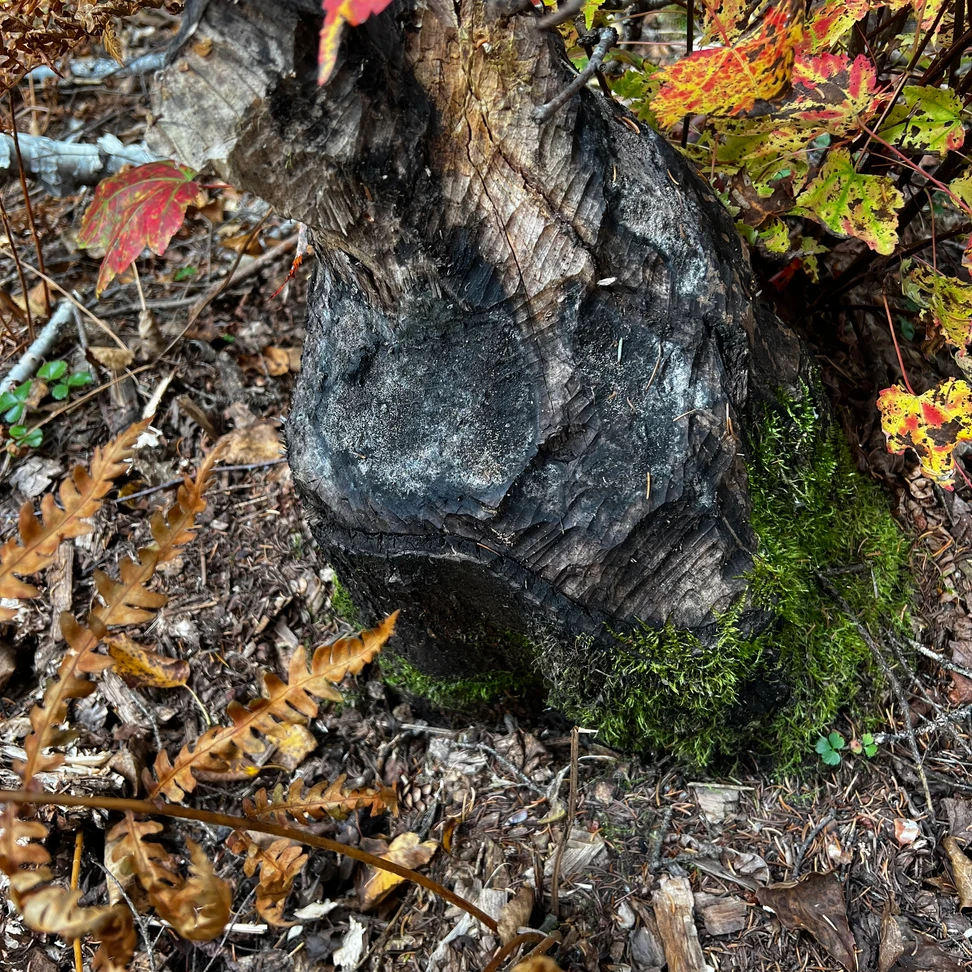Climate Change in Canada and an Unlikely Saviour: An excerpt from my travels in Canada.
- Rowena Mynott

- Nov 23
- 3 min read

As I arrived in Canada, I was greeted by the beginnings of a spectacular transformation: the annual changing of the leaves. It's a natural spectacle that draws tourists from all corners, all eager to witness the magic of Autumn in person. Our lakeside chalet for the next 2 weeks, nestled in this picturesque scene, is surrounded by an awe-inspiring collection of flora. It might sound cliché, but when you look at the horizon, it's as if a tapestry has come to life. The colours, ranging from fiery reds to golden yellows and burnt oranges, blend seamlessly, creating a breathtaking panorama.
The air is crisp, and the scent of fallen leaves mingle with the earthy fragrance of pine. Canada, in all its glory, is nature's grand finale before the arrival of winter. From the Maritimes to the Rockies, each province has its own unique display of autumnal splendour. The maples in Ontario and Quebec set the landscape ablaze with their fiery red leaves, while the Rockies and the Pacific Northwest offer a more subdued but equally enchanting display of golds and ambers.

However within this magical vista hides a sad and terrifying symptom of climate change:Wildfires. This year Canada suffered its worst wildfire year on record for the amount of land burned. In Quebec where I am currently staying, they have been particularly hard hit during the 2023 wildfire season, with more frequent wildfires than in the past, and fewer resources and experience with which to fight them. It has seen the most are a burned of any province with 13 million acres. As of June 10, the province had reported 446 fires, compared to the average of 212 for the same date. On June 8, 137 fires were active in Quebec and 54 in Ontario. On the afternoon of June 25, Montreal (where we flew into) had the worst air quality in the world due to wildfire smoke in the region; several cultural and sporting events were cancelled or postponed in response.

Amongst all this devastation there is one unlikely hero who could help ease these damaging effects, and it comes in the form of one of Canadas national icons: The Beaver. Often seen as a pest by many whose garden vegetation may be damaged or land flooded, the beaver is one of the worlds natural ‘ecosystem engineers’. Having the ability to construct a single completely watertight dam overnight, the beaver is a marvel of nature and one that scientists are starting to look at as an answer to climate change.
These industrious little creatures build dams for protection from predators (such as wolves and coyotes) and to store food for the winter. It is now thought that these dams could be an answer to providing fire resistant habitats during times of wildfire. In 2020, Emily Fairfax and Andrew Whittle published their findings in the Journal of Ecological Adaptions. Their research was conducted in several US states and observed the land in and around beaver dams before and after wildfire damage. The result was that the land around beaver dams stayed greener than areas without wildfire damage. This provides not only a crucial habitat for countless species to shelter during the fires but also contributes to the overall health of the surrounding environment. Moreover, these hard working little creatures are expert carbon sequesters. Wetlands, formed as a result of beaver activities, store significant amounts of carbon dioxide, playing a crucial role in mitigating climate change.

"Over the past decade and throughout the western states a paradigm shift has occurred, with a transition from beavers being viewed primarily as a potential nuisance species to the growing recognition of the vast ecological benefits of beaver activity on the landscape. As a result, there is a rapidly expanding desire among landowners, land managers, restoration practitioners, and other stakeholders in California to utilise beavers for habitat and water management, ecosystem restoration, and increased resiliency to climate change and wildfire.”
-California Department of Fish and Wildlife

As I sit here, immersed in the breathtaking scenery that envelops me, I can't help but pay homage to the remarkable handiwork of the beavers that surrounds me. The gnawed logs, fallen trees, sturdy dams, and quaint lodges all stand as testaments to a thriving beaver population in this area. Hopefully, their presence will play a crucial role in safeguarding this region and its wildlife inhabitants during future fires.








Comments